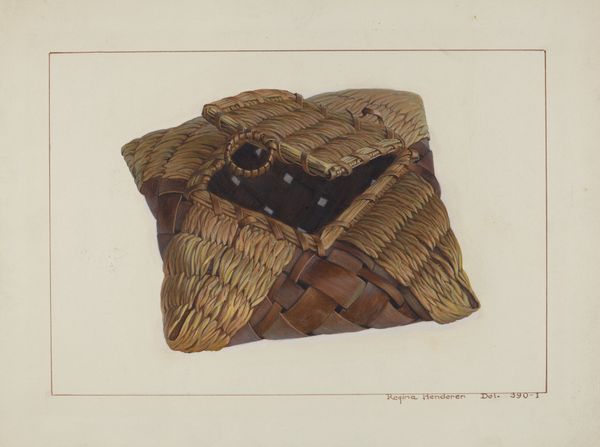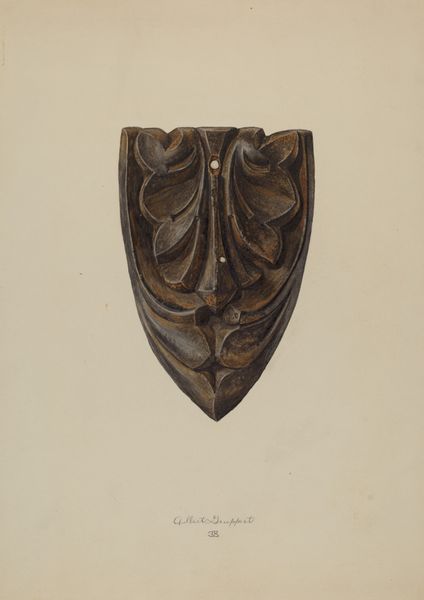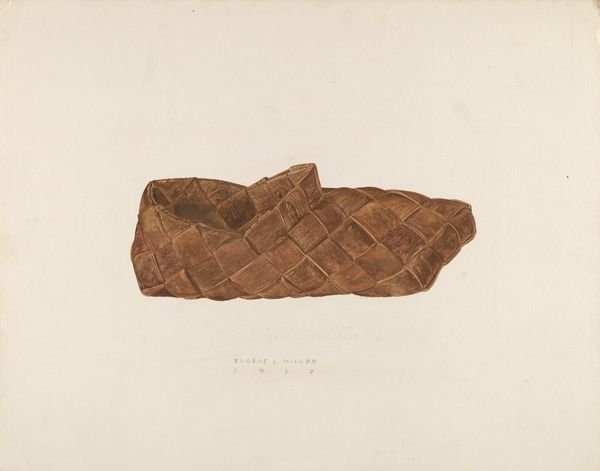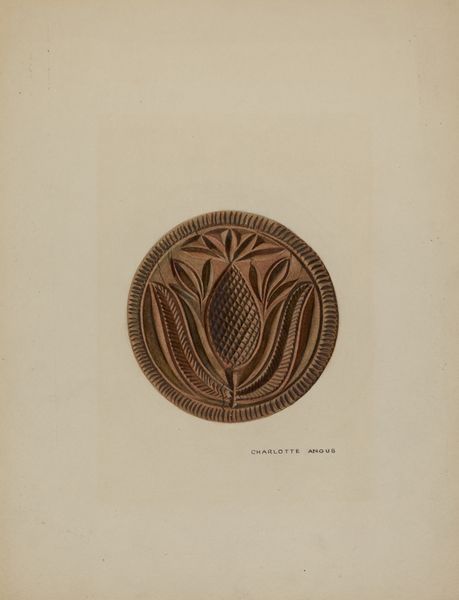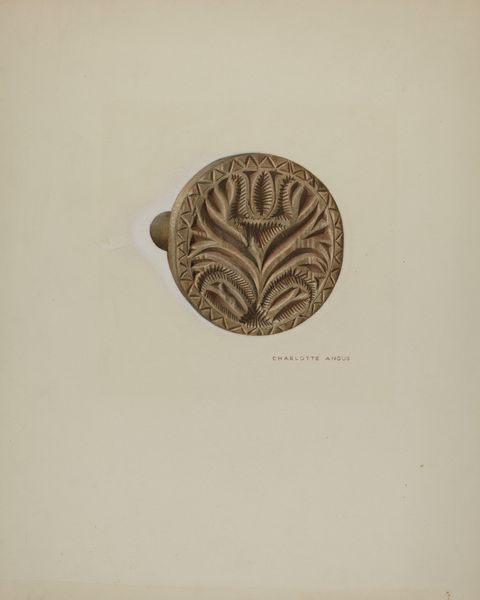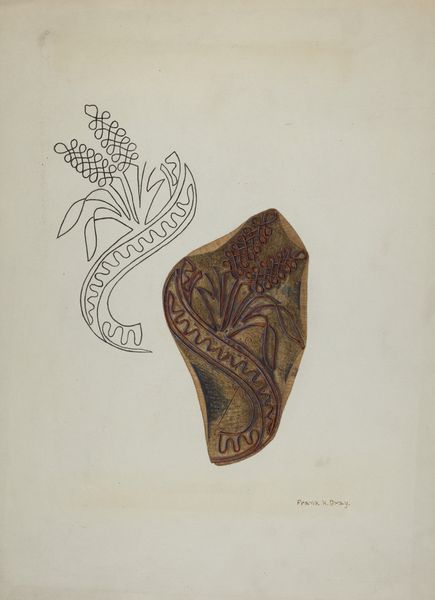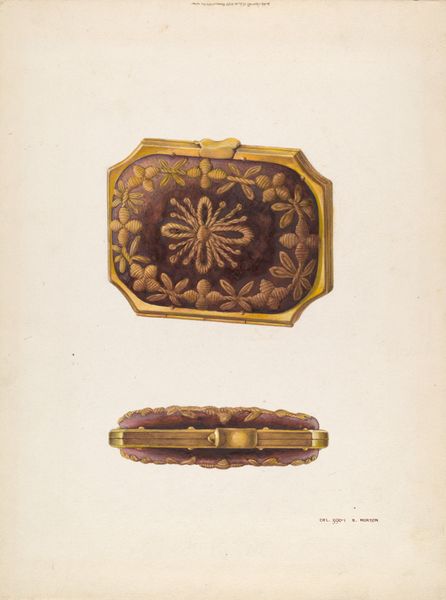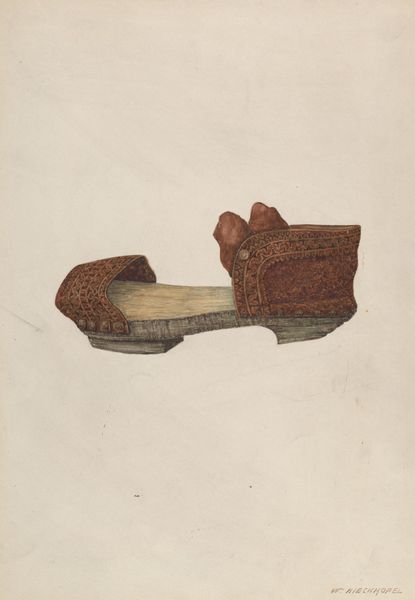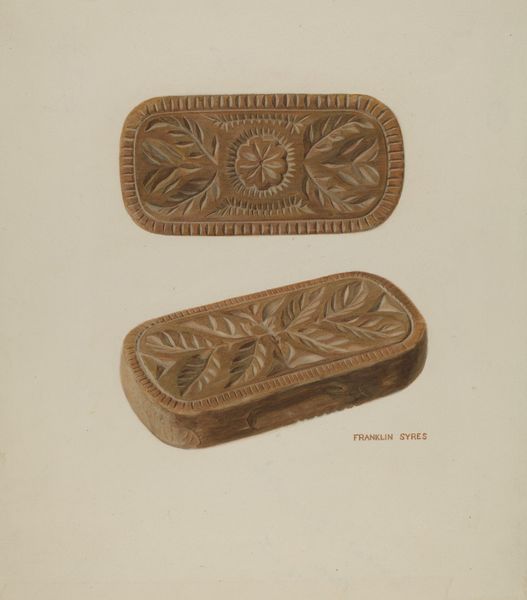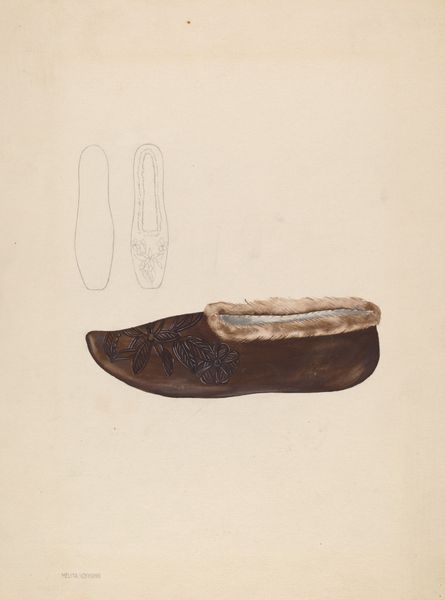
drawing, painting, watercolor
#
drawing
#
painting
#
watercolor
#
folk-art
#
realism
Dimensions: overall: 25.1 x 35.6 cm (9 7/8 x 14 in.) Original IAD Object: 7" wide; 3 1/2" high; 5 1/2" deep
Copyright: National Gallery of Art: CC0 1.0
Curator: Welcome! Today we’re looking at a watercolor and gouache drawing from around 1940, titled "Pa. German Butter Mold," by Charlotte Angus. Editor: It feels very grounded, somehow. The warm browns and the detail in the carving create an image of simple domesticity. Curator: Absolutely. It’s a still life of an object deeply embedded in a specific culture. Butter molds like this weren't just tools, they were also expressions of cultural identity, particularly within Pennsylvania German communities. This speaks to a convergence of practicality and aesthetic intent. The process of carving these molds – the labor, the wood itself – these all contribute to its value. Editor: You’re right. The motifs, which seem botanical to me, carry symbolic weight. These recurring foliate motifs often reference abundance, fertility, and connection to the natural world. The daily ritual of shaping butter becomes something almost sacred. Curator: Precisely. It challenges this traditional art-craft hierarchy. It represents the way everyday objects were imbued with both purpose and significance, blurring boundaries and prompting questions about functionality. I mean, think of the process of preserving, molding and imprinting. Food culture became intertwined with social practices and a community's historical legacy. Editor: So this butter mold moves from simple usefulness to meaning through this rendering. In fact, if it wasn't so detailed it could even represent the half moon or cycle of seasons. Do you think the maker was consciously thinking of these things when creating it? Or the person commissioning the piece for daily domestic labor? Curator: Consciously or not, that imagery gets activated. It reveals something of our cultural memories and the psychological pull those symbols exert over time. But I can appreciate viewing the mold from a practical point of view, too, and looking at its materiality. The wood is as integral as the image, they interact. Editor: That intersection—where material and metaphor converge—creates such resonance, I think. What was once a humble kitchen implement is transformed into a vessel carrying rich historical and symbolic meaning. Curator: A potent reminder that objects can hold much deeper stories about labor, consumption, and our place in the world. Editor: Precisely. I think seeing the world this way makes butter seem a lot more profound than before!
Comments
No comments
Be the first to comment and join the conversation on the ultimate creative platform.

